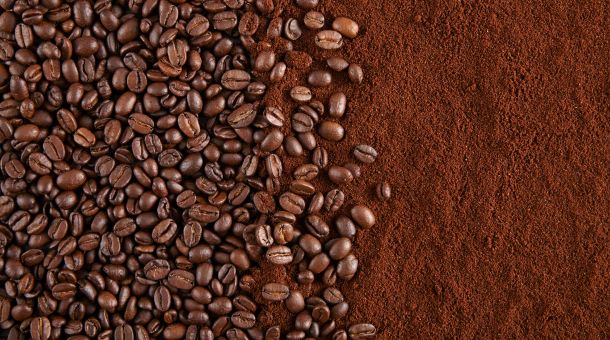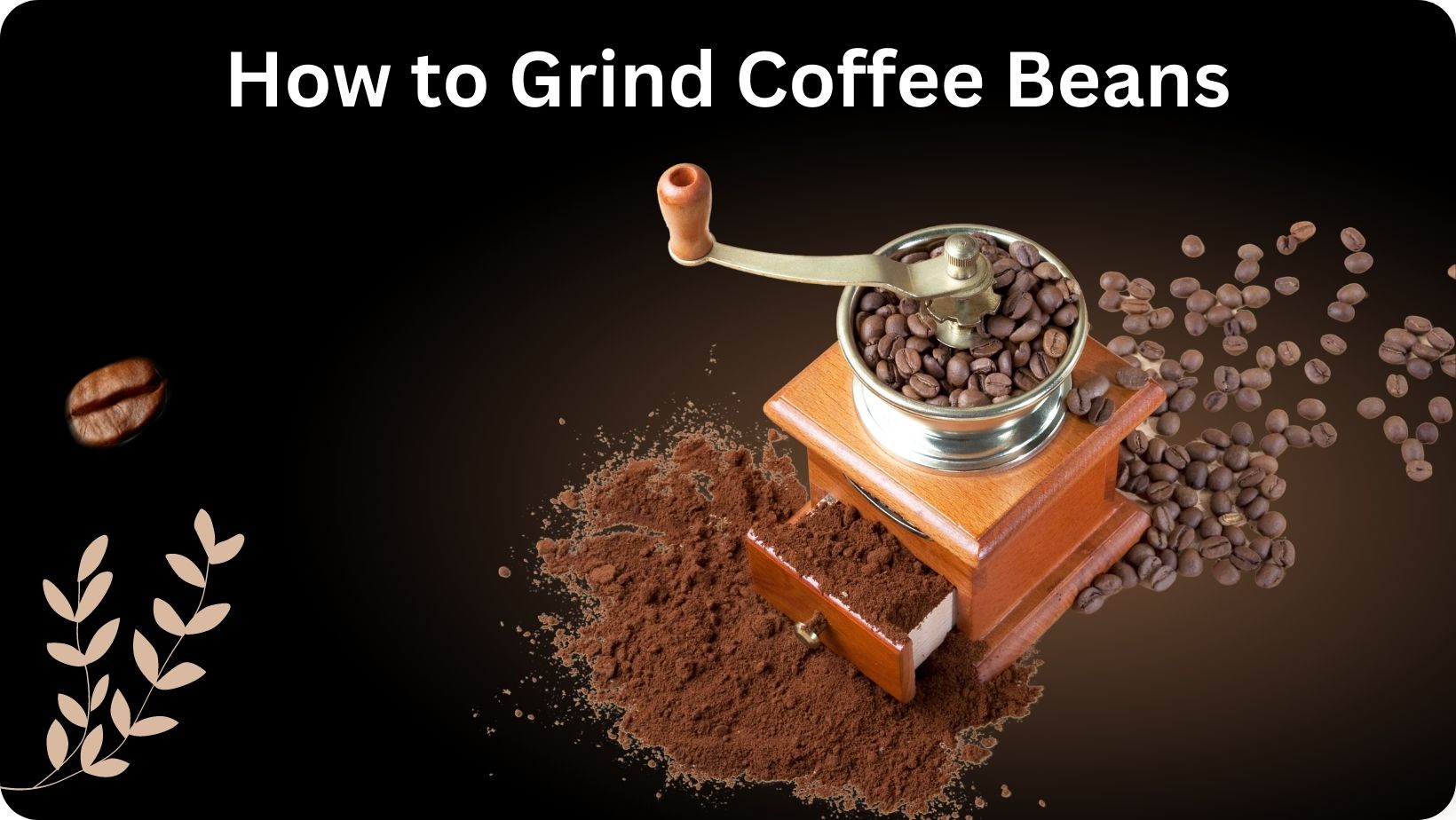How to Grind Coffee Beans for Your Brewing Method?
When it comes to brewing coffee, one of the most crucial factors that determine the flavor and aroma of your cup is the grind size of the coffee beans. Achieving the perfect grind size for your brewing method can make a significant difference in the taste and quality of your coffee.
In this comprehensive guide, we will walk you through the various grinding techniques and provide valuable insights on how to grind coffee beans to perfection for different brewing methods.
Importance of Grind Size

Before delving into the specifics of grinding coffee beans, it’s essential to understand why grind size matters. The grind size directly impacts the extraction process during brewing.
Different brewing methods require different grind sizes to optimize the extraction of flavors and oils from the coffee grounds. If the grind size is too coarse or too fine, it can result in under-extraction or over-extraction, leading to a subpar coffee experience.
The Grind Coffee Beans: Step-by-Step Guide
Step 1: Choosing the Right Grinder
The first step in grinding coffee beans is to select the right grinder for your needs. There are two main types of grinders: blade grinders and burr grinders.
Blade grinders are the most common and affordable option. They consist of a blade that spins rapidly to chop the coffee beans into smaller pieces. While blade grinders are convenient and easy to use, they can result in inconsistent grind size, leading to uneven extraction and a less flavorful cup of coffee.
On the other hand, burr grinders are known for their precision and consistency. They use two revolving abrasive surfaces, known as burrs, to crush the coffee beans into a uniform grind size. Burr grinders allow you to adjust the grind size more accurately, making them the preferred choice for coffee enthusiasts who seek a high-quality brew.
When choosing a grinder, consider your budget, brewing method, and desired level of control over the grind size. Burr grinders are generally recommended for a more consistent and flavorful cup of coffee.
Step 2: Selecting the Appropriate Grind Size
The grind size you choose depends on your preferred brewing method. Different brewing methods require different grind sizes to achieve the best flavor extraction. Here are some general guidelines:
- Coarse Grind: Suitable for French press and cold brew methods. The large particles prevent over-extraction and result in a full-bodied and smooth cup of coffee.
- Medium Grind: Ideal for pour-over methods such as Chemex and V60. This grind size allows for a moderate extraction, balancing flavor and clarity.
- Fine Grind: Used for espresso machines. The fine particles enable a quick and concentrated extraction, producing a rich and intense shot of espresso.
It’s essential to adjust the grind size according to your taste preferences and the specific characteristics of your coffee beans. Experimentation is key to finding the perfect balance.
Step 3: Measuring the Coffee Beans
To achieve consistent results, it’s important to measure your coffee beans accurately. Use a kitchen scale to weigh the desired amount of beans based on the coffee-to-water ratio recommended for your brewing method.
A general starting point is a ratio of 1:15 (1 part coffee to 15 parts water). However, feel free to adjust this ratio to suit your personal taste preferences.
By measuring the coffee beans, you ensure consistency in each brew, allowing you to replicate your favorite cup of coffee every time.
Step 4: Grinding the Beans
Now that you have chosen the right grinder, selected the appropriate grind size, and measured the coffee beans, it’s time to grind them.
If using a blade grinder, add the desired amount of coffee beans to the grinder’s container. Place the lid securely and pulse the grinder in short bursts until you achieve the desired grind size. Be cautious not to over-grind, as this can lead to an uneven consistency.
For burr grinders, adjust the settings according to your desired grind size. Then, add the coffee beans to the hopper and start the grinding process. The grinder will crush the beans into a consistent grind size, ensuring even extraction and a balanced flavor profile.
Grinding Techniques

Burr Grinders
The Gold Standard Burr grinders are widely regarded as the best option for achieving consistent and precise grind sizes. These grinders utilize two abrasive surfaces, known as burrs, to crush the coffee beans into uniform particles. Burr grinders offer a wide range of grind size settings, allowing you to adjust the grind precisely to your brewing method.
Blade Grinders
Budget-Friendly Alternative Blade grinders are more affordable but often result in inconsistent grind sizes. These grinders use spinning blades to chop the coffee beans, resulting in a mix of particle sizes. While blade grinders are less precise, they can still produce satisfactory results, especially for coarser grinds.
Manual Grinders
Portable and Precise Manual grinders are an excellent option for coffee enthusiasts who value precision and enjoy the ritual of hand grinding. These grinders are typically compact and travel-friendly, making them ideal for those who want to enjoy freshly ground coffee on the go.
After grinding the beans, transfer the coffee grounds to your brewing device of choice, and follow the specific instructions for your brewing method to enjoy a delicious cup of coffee.
Grinding Tips and Best Practices
- Freshness is Key To ensure the best possible flavor, it’s crucial to grind your coffee beans just before brewing. Coffee beans start to lose their freshness and flavor once they are ground due to increased exposure to oxygen.
- Consistency is Crucial for optimal extraction, aim for a consistent grind size. Inconsistent particle sizes can lead to uneven extraction, resulting in a lackluster cup of coffee. Whichever grinding method you choose, ensure that the particles are as uniform as possible.
- Adjusting the Grind Size If you find that your coffee is too weak or too bitter, you can fine-tune the taste by adjusting the grind size. For a stronger cup, try a finer grind, while a coarser grind can help reduce bitterness. Keep experimenting until you find the perfect balance.
- Grind in Small Batches When grinding coffee beans, it’s best to work in small batches to maintain consistency. Grinding the entire bag of coffee at once can lead to variations in particle size, affecting the overall extraction.
- Clean Your Grinder Regularly to prevent any build-up of oils and residue, clean your grinder regularly. Follow the manufacturer’s instructions for cleaning and maintenance to ensure that your grinder remains in optimal condition.
FAQs
What is the best grind size for espresso?
Espresso requires a fine grind size, similar to table salt, to achieve optimal results.
Can I use pre-ground coffee for a French press?
While it is possible, it is generally recommended to grind your coffee beans fresh for the best flavor. Pre-ground coffee may result in over-extraction and a muddled taste.
How long can I store coffee beans after grinding?
To maintain freshness, it is best to use coffee beans within two weeks of grinding. After that, the quality and flavor start to deteriorate.
Should I use a manual or electric grinder?
Both manual and electric grinders have their advantages. Manual grinders offer more control and portability, while electric grinders are quicker and more convenient.
Can I grind coffee beans for Turkish coffee?
Turkish coffee requires an extra-fine grind, even finer than espresso. Some grinders may not achieve the desired fineness, so it is best to use a grinder specifically designed for Turkish coffee.
Conclusion
Mastering the art of grinding coffee beans is an essential skill for any coffee lover. By understanding the appropriate grind size for your brewing method and following the step-by-step process outlined in this guide, you can unlock the full potential of your coffee beans.
Experiment, adjust, and explore different grind sizes to find your perfect cup of coffee. Remember, each brewing method has its unique requirements, so tailor your grind accordingly. Happy brewing!
How to Grind Coffee Beans for Your Brewing Method How to Grind Coffee Beans for Your Brewing Method How to Grind Coffee Beans for Your Brewing Method How to Grind Coffee Beans for Your Brewing Method How to Grind Coffee Beans for Your Brewing Method How to Grind Coffee Beans for Your Brewing Method How to Grind Coffee Beans for Your Brewing Method How to Grind Coffee Beans for Your Brewing Method How to Grind Coffee Beans for Your Brewing Method How to Grind Coffee Beans for Your Brewing Method How to Grind Coffee Beans for Your Brewing Method How to Grind Coffee Beans for Your Brewing Method How to Grind Coffee Beans for Your Brewing Method How to Grind Coffee Beans for Your Brewing Method How to Grind Coffee Beans for Your Brewing Method How to Grind Coffee Beans for Your Brewing Method How to Grind Coffee Beans for Your Brewing Method How to Grind Coffee Beans for Your Brewing Method

